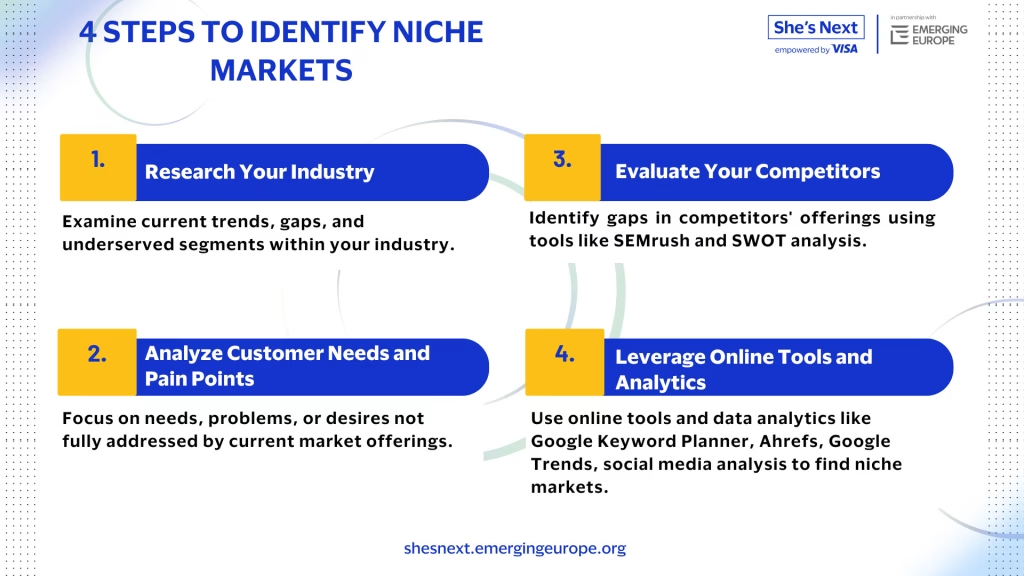
How to Identify Niche Markets: A Step-by-Step Guide
Niche markets represent a crucial opportunity for businesses looking to establish a strong presence with a specific audience. This guide will provide actionable steps to help you identify niche markets that can foster business growth and enhance your competitive edge.
Understanding Niche Markets
A niche market is a focused, targetable portion of a broader market where specific products or services can be sold. These markets benefit businesses by reducing competition, allowing for more targeted marketing, and fostering higher customer loyalty.
Steps to Identify Niche Markets
The following steps will help effectively identify and explore niche markets, enabling companies to meet unique customer needs and differentiate themselves from the competition.
Research Your Industry
Begin by examining current trends, gaps, and underserved segments within your industry. Use resources like industry reports, read trade journals, and participate in online forums related to your industry.
For example, in the fashion industry, look for emerging trends like sustainable fashion or tech-integrated clothing, which are gaining traction among consumers.

Analyse Customer Needs and Pain Points
Focus on uncovering specific needs, problems, or desires that current market offerings do not fully address. Conduct surveys using SurveyMonkey or Google Forms, perform interviews, and run focus groups to gather detailed customer insights.
For instance, if you discover that there is a lack of affordable plus-size activewear, this could represent a potential niche market.
Evaluate Your Competitors
Analyse your competitors to identify any gaps in their offerings. Conduct a competitive analysis using tools like SEMrush for digital competition or SWOT analysis to understand their strengths and weaknesses.
Look for areas they are overlooking, such as eco-friendly packaging in consumer goods, which could serve as an opportunity for differentiation.
Leverage Online Tools and Analytics
Utilize online tools and data analytics to pinpoint potential niche markets. Keyword research tools like Google Keyword Planner and Ahrefs, along with Google Trends, can reveal rising interests in specific product categories, such as vegan beauty products.
Also, analysing social media trends and feedback can provide real-time insights into consumer preferences and emerging trends.
By following these steps, you’ll be better equipped to identify and target niche markets that align with your business goals and customer needs.
Stay tuned for our next article, which will delve into how to capitalize on the identified niche markets, ensuring that you not only find but also effectively exploit these unique opportunities.
New Free Courses — Made for Ambitious Women Entrepreneurs!
It’s time to grow smarter, adapt faster, and take your business global.
Explore two powerful courses available exclusively to She’s Next members:
The Reinvention Masterclass for Start-up Founders
Beyond Borders: Building for Global Success
Enroll today — it’s free!






Responses